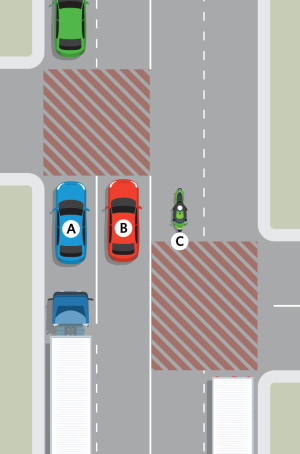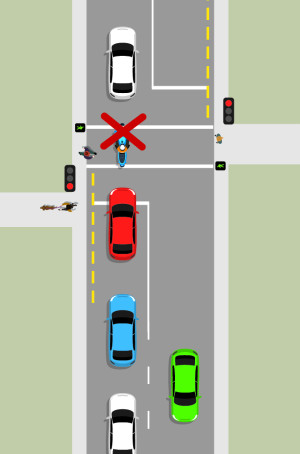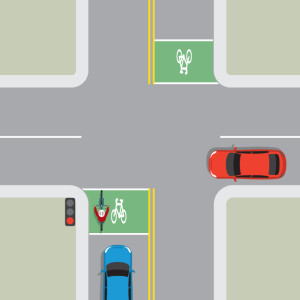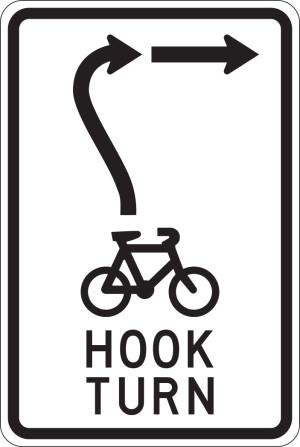When traffic is heavy, queues of vehicles can build up quickly. If you find yourself in a traffic queue, it's important you don’t block other roads, railway lines or pedestrian crossings.
You must not go into or attempt to cross the intersection, railway level crossing, pedestrian crossing or an area controlled by pedestrian traffic signals, unless there's space for your vehicle on the other side.
In the first illustration, vehicle A must not go into the intersection because there's no space on the other side of the intersection.
Vehicles B and C can go into the intersection because there is enough space on the other side of the intersection.
The vehicle in the second illustration is blocking the area controlled by pedestrian traffic signals.

Not blocking the intersection

Blocking the area controlled by pedestrian traffic signals
When turning right at traffic lights you can enter and stop in the intersection, as long as there are no other cars already waiting to turn right. When it’s safe, you may complete the turn even if the light is no longer green by the time you get to turn.
Cycle-only lanes are marked by a symbol of a cycle on the road. You must not stop in or block a cycle lane. When coming up to an intersection, you must not enter a cycle lane if stationary traffic is in the way and you’ll block the cycle lane.

An advanced stop box is a green square with a white cycle symbol at the top of a controlled intersection. It’s only for cyclists and gives them a head start when the lights turn green. You should not go onto the green cycle box. You should expect cyclists to come through to the front of the queue.

You may also see this sign ahead of an intersection where a hook turn is recommended. Bicycle riders doing hook turns may cross the intersection and stop in front of you in an advanced stop box or hook turn box to wait for the light to turn green.
